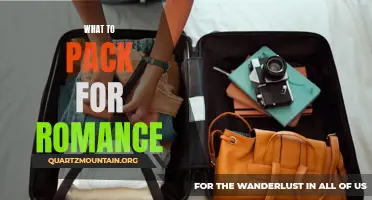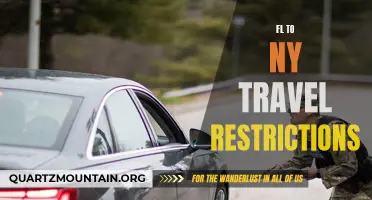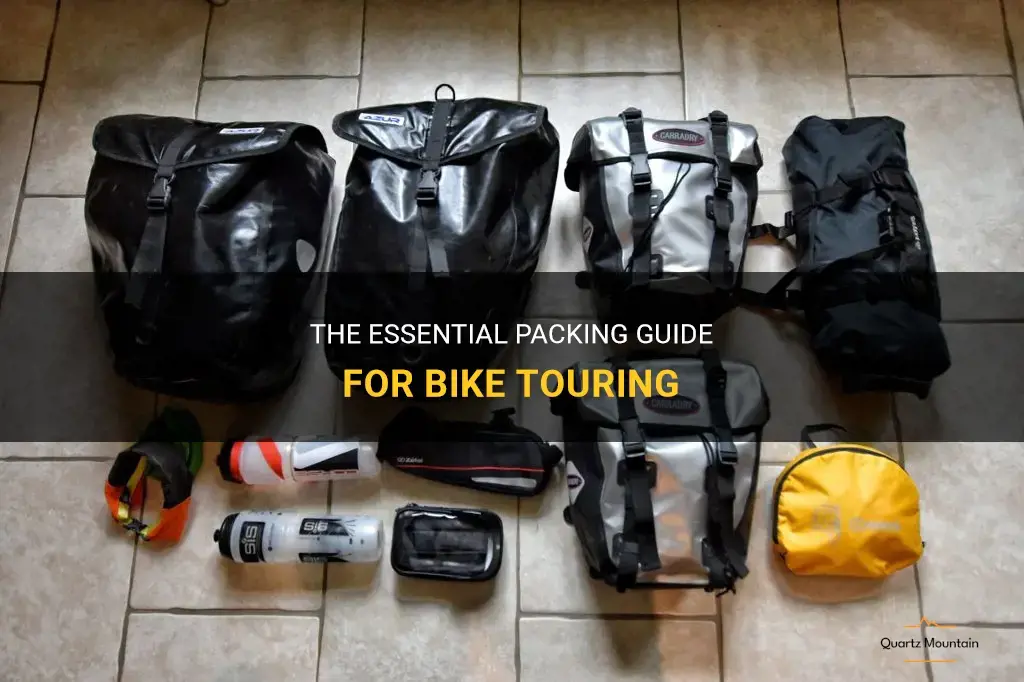
Are you an adventurous cyclist who loves nothing more than embarking on exciting bike tours? If so, you know how crucial it is to pack all the essential gear and equipment for your journey. From clothing and camping gear to tools and spare parts, being prepared is key to enjoying a successful and enjoyable bike touring experience. In this essential packing guide, we will delve into the must-have items that every bike tourist should bring along on their next two-wheeled adventure. So grab your panniers and get ready to hit the open road in style and comfort with our comprehensive packing guide for bike touring.
| Characteristics | Values |
|---|---|
| Bike | Touring bicycle |
| Navigation | Maps, GPS |
| Clothing | Padded shorts, jerseys |
| Bike tools | Tire levers, pump |
| Camping gear | Tent, sleeping bag |
| Cooking equipment | Stove, pot |
| Food and water | Energy bars, bottles |
| First aid kit | Bandages, medication |
| Personal hygiene items | Toothbrush, soap |
| Repair kit | Spare tubes, patches |
| Rain gear | Waterproof jacket, pants |
| Lighting | Bike lights, headlamp |
| Electronics | Phone, charger |
| Money and identification | Cash, ID |
| Miscellaneous items | Multi-tool, duct tape |
What You'll Learn
- What are the essential items that should be packed for a bike touring trip?
- How do you determine the right amount of clothes to pack for a bike touring trip?
- What kind of camping gear is necessary for a bike touring trip?
- Are there any specific tools or spare parts that should be included in a bike touring packing list?
- How do you make sure you pack efficiently and keep the weight of your gear to a minimum during a bike touring trip?

What are the essential items that should be packed for a bike touring trip?
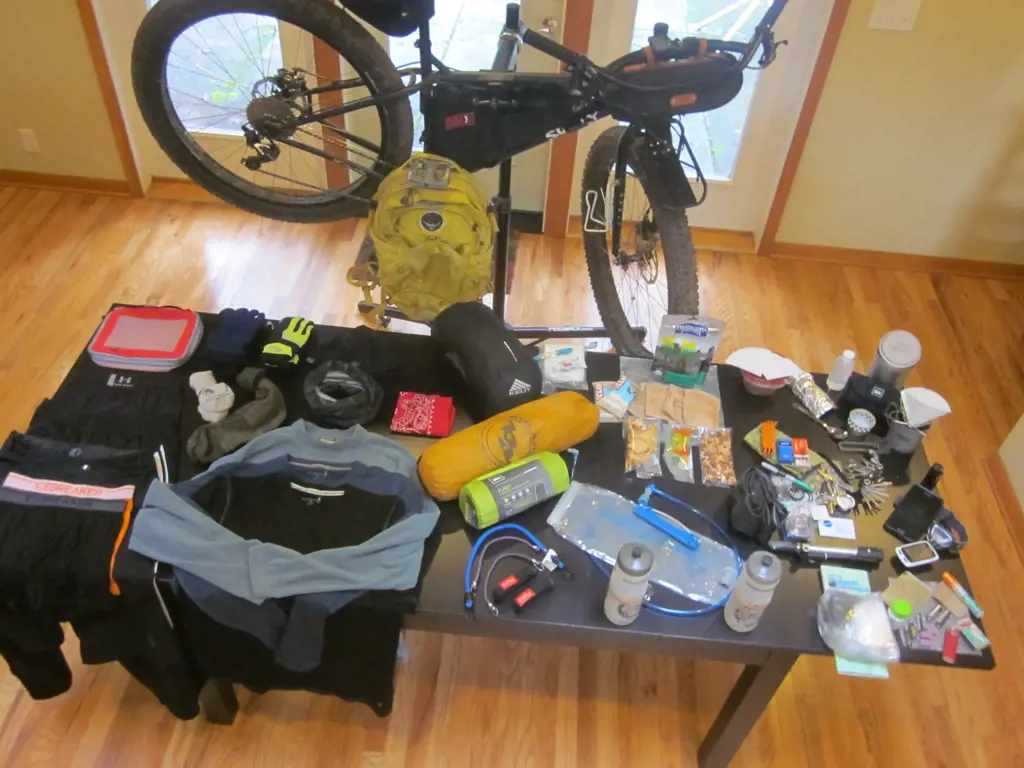
When planning for a bike touring trip, it is crucial to pack the right gear and essentials to ensure a smooth and enjoyable journey. Here are some essential items that should be packed for a bike touring trip:
- Bike Repair Kit: A bike repair kit is perhaps the most critical item to pack for a bike touring trip. This kit should include spare tubes, a patch kit, tire levers, a multi-tool, and a portable bike pump. These tools will allow you to fix common bike issues like flat tires or loose bolts on the go.
- Navigation Tools: It's important to have a reliable navigation system to stay on track during your bike tour. Bring a GPS device or a smartphone with navigation apps installed. Make sure to download maps for offline use in case you get out of cellular coverage. It is also helpful to have a good quality compass and a detailed road map as backup.
- Clothing and Personal Items: Pack a few changes of comfortable cycling clothes depending on the weather conditions you expect on your trip. Don't forget to include waterproof and windproof jackets, gloves, and warm layers for colder climates. Additionally, bring personal items like toiletries, sunscreen, sunglasses, and a first aid kit.
- Camping Gear: If you plan on camping during your bike tour, it's essential to pack lightweight camping gear. This includes a compact tent, a sleeping bag, a sleeping pad, and a camping stove for cooking meals. Choose gear that is lightweight and compact to save space and reduce the added weight on your bike.
- Cooking and Food Supplies: Packing lightweight cooking supplies and food is crucial for a bike touring trip. Bring a lightweight pot, utensils, a camping stove, and fuel. Consider packing lightweight and non-perishable foods like dehydrated meals, energy bars, and snacks. Ensure you have enough water bottles or a water hydration system to stay hydrated throughout your journey.
- Bike Lock and Security: A reliable bike lock is essential to keep your bike safe when you're away from it. Look for a durable lock that is difficult to cut or break. Additionally, consider bringing a small cable lock to secure any detachable bike components like your saddle or panniers.
- Camping and Sleeping Accessories: Along with your camping gear, pack essentials like a headlamp or flashlight, a camping pillow, earplugs, and a compact towel. These items will make outdoor sleeping more comfortable and convenient.
- Money and Identification: Ensure you have enough cash, credit cards, and identification documents with you. It is advisable to keep them in a waterproof pouch or bag to protect them from water damage.
- Bike Lights and Reflective Gear: To ensure your safety on the road, pack front and rear bike lights for visibility during low-light conditions. Consider wearing reflective clothing and accessories to enhance your visibility to motorists.
- Entertainment and Communication: Long bike tours can be mentally challenging, so bring items like books, a portable music player, or a journal to keep yourself entertained during downtime. Also, bring a mobile phone or a two-way radio for emergency communication.
Remember that packing efficiently is essential to avoid unnecessary weight on your bike. Consider the climate, terrain, and duration of your trip when selecting gear and clothing. Additionally, always test and familiarize yourself with your gear before embarking on your bike touring adventure. Happy pedaling!
The Ultimate Packing Guide for a May Trip to Vegas
You may want to see also

How do you determine the right amount of clothes to pack for a bike touring trip?
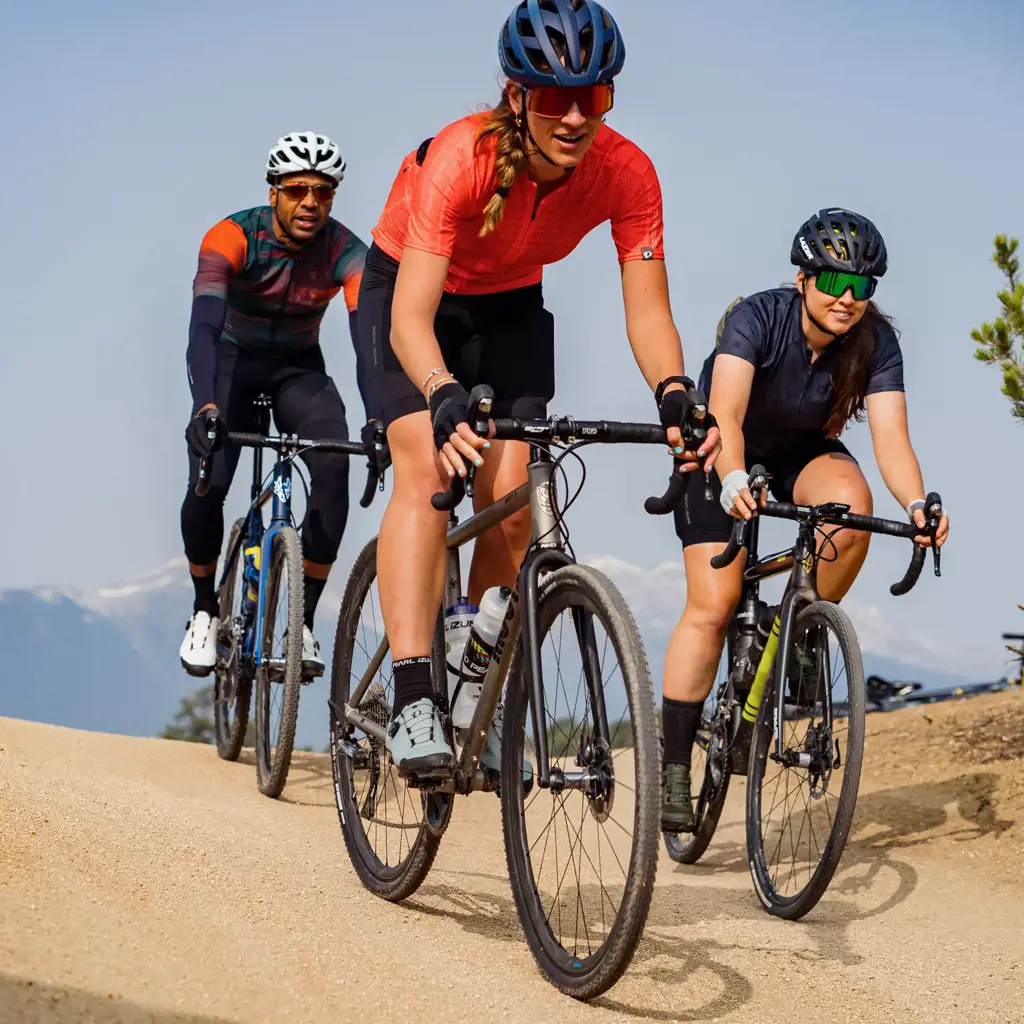
When embarking on a bike touring trip, packing the right amount of clothes is essential to ensure you have what you need without carrying unnecessary weight. The perfect balance between having enough clothes for comfort and not overpacking can be achieved by following a few simple steps. In this article, we will discuss how to determine the right amount of clothes to pack for a bike touring trip based on scientific principles, experience, and practical examples.
- Consider the duration and weather conditions: The first step in determining the right amount of clothes is to assess the duration and weather conditions of your bike touring trip. If you are traveling for a few days, you can plan for a smaller set of clothes. However, for longer trips, it is important to pack enough clothes to ensure cleanliness and comfort. Additionally, consider the weather conditions you will encounter, including temperature, rain, and wind, as this will influence the type and quantity of clothing you need.
- Optimize your clothing: When it comes to bike touring, it is crucial to pack lightweight, versatile clothing that can be layered to adapt to varying weather conditions. Choose clothing made from moisture-wicking, quick-drying materials to stay comfortable during physical exertion and wet weather. Look for items that can be mixed and matched to create different outfits with fewer pieces. For example, convertible pants that can be transformed into shorts or a long-sleeve shirt that can be rolled up to become a short-sleeve shirt.
- Pack essentials: There are certain items that are considered essential regardless of the duration or weather conditions of your bike touring trip. These include:
- Base layers: Pack a few pairs of moisture-wicking underwear and socks to keep you comfortable and prevent chafing.
- Cycling shorts: Invest in high-quality cycling shorts with padded chamois to ensure comfort during long rides.
- Jerseys and tops: Pack a mix of short and long-sleeve jerseys/tops for different weather conditions.
- Outerwear: Bring a lightweight waterproof jacket or windbreaker to protect against rain and wind.
- Cycling shoes: Choose comfortable cycling shoes that are suitable for your specific type of bike pedals.
- Plan for laundry: Packing enough clothes for the entire trip can quickly add up in terms of weight and bulk. To reduce the number of clothes you need, plan for laundry along the way. Research campsites or accommodations with laundry facilities or consider carrying a small portable washing device. This way, you can wash and dry your clothes overnight or during rest days, allowing you to pack fewer items.
- Learn from experience and adjust: The amount of clothes you need for a bike touring trip may vary depending on personal preferences and experiences. It is helpful to keep a journal during your trips to record what clothes were essential, what items were underutilized, and any unexpected weather conditions you encountered. Use this information to refine your packing list for future trips.
Here's an example packing list for a five-day bike touring trip in moderate weather conditions:
- 3 pairs of cycling shorts
- 5 moisture-wicking underwear
- 5 pairs of moisture-wicking socks
- 2 short-sleeve jerseys
- 1 long-sleeve jersey
- 1 lightweight waterproof jacket
- 1 pair of convertible pants/shorts
- 1 pair of comfortable cycling shoes
- 1 set of base layers (long-sleeve top and bottoms)
- 1 helmet
- 1 pair of gloves
- 1 buff or neck gaiter
Remember, the goal is to find the balance between having enough clothes for comfort and not carrying unnecessary weight. By following these steps, considering scientific principles, drawing from experience, and using practical examples, you can confidently determine the right amount of clothes to pack for your bike touring trip.
Ultimate Guide: Essential Items to Pack for Your Big Island Hawaii Adventure
You may want to see also

What kind of camping gear is necessary for a bike touring trip?
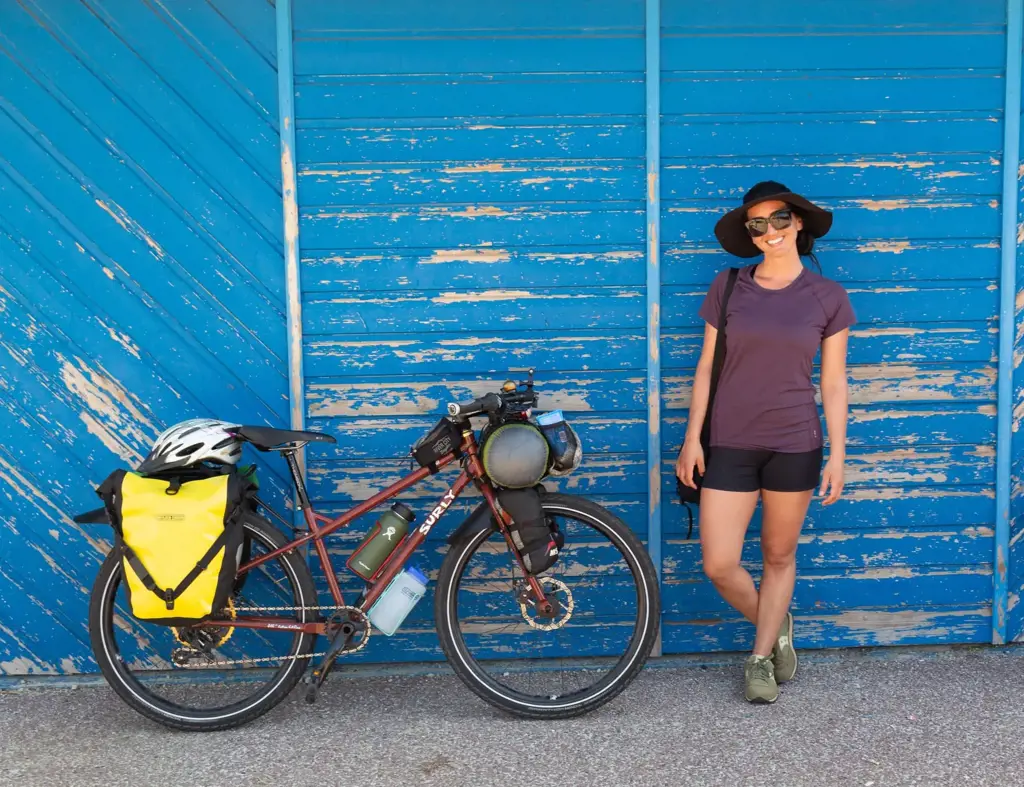
Camping Gear Necessary for a Bike Touring Trip
Bike touring is a great way to explore new places and enjoy the outdoors. Whether you're planning a short weekend trip or a multi-week adventure, it's important to have the right camping gear to ensure a comfortable and enjoyable experience. Here are some essential items to consider when packing for your bike touring trip:
- Tent: A lightweight and compact tent is a must-have for any bike touring trip. Look for a tent that is easy to set up and provides adequate protection from the elements. There are many options available, ranging from one-person backpacking tents to larger models that can accommodate multiple people.
- Sleeping Bag: Invest in a high-quality sleeping bag that is suitable for the temperature range you'll be cycling in. Look for one that is lightweight, compact, and can be easily rolled up and attached to your bike. Consider a sleeping bag liner to add an extra layer of warmth and comfort.
- Sleeping Pad: A good sleeping pad is essential for a good night's sleep while camping. Look for a lightweight and compact pad that provides adequate insulation from the ground. There are inflatable and foam options available, so choose one that suits your preferences and budget.
- Cooking Equipment: If you plan on cooking your own meals while on your bike touring trip, you'll need some cooking equipment. A lightweight stove, cookware, and utensils are essential. Consider a stove that uses a fuel source that is readily available along your route, such as gas canisters or alcohol.
- Food Storage: It's important to have a way to store and transport your food while on a bike touring trip. Look for waterproof and durable containers or bags that can be easily attached to your bike. Consider using a combination of zip-lock bags, dry bags, and lightweight containers to organize and protect your food.
- Water Filtration: Depending on your route and destination, you may need to filter or purify water before drinking it. There are many portable water filtration options available, ranging from simple filters to UV sterilizers. Choose one that suits your needs and the availability of water sources along your route.
- Clothing: Pack lightweight and versatile clothing that is suitable for a range of weather conditions. Consider moisture-wicking and quick-drying fabrics that can be layered for warmth. Don't forget to pack rain gear, a hat, gloves, and sunscreen for protection from the sun and elements.
- Bike Repair Kit: It's essential to have some basic bike repair tools and spare parts for any bike touring trip. Pack a multi-tool, spare inner tubes, a pump, tire levers, and any specific tools required for your bike's components. Familiarize yourself with basic bike maintenance and repairs before setting off on your trip.
- Lighting: A reliable and lightweight headlamp or bike light is essential for nighttime visibility and campsite activities. Look for options that have a long battery life and can be easily recharged or have replaceable batteries.
- Personal Care Items: Don't forget to pack toiletries, a first aid kit, insect repellent, and any necessary medications. Consider the size and weight of these items and pack them in a waterproof bag or container.
Remember to pack your gear in a way that distributes the weight evenly on your bike. Use bike-specific packs, panniers, or a bike trailer to carry your gear. Test your gear before your trip to ensure everything is functioning properly, and make adjustments as needed.
In conclusion, having the right camping gear is essential for a successful and enjoyable bike touring trip. Consider the duration, terrain, and weather conditions of your trip when selecting your gear. With the right equipment, you'll be well-prepared to explore new places and create lasting memories on your bike touring adventure.
Essential Items to Pack for a Memorable Field Trip
You may want to see also

Are there any specific tools or spare parts that should be included in a bike touring packing list?
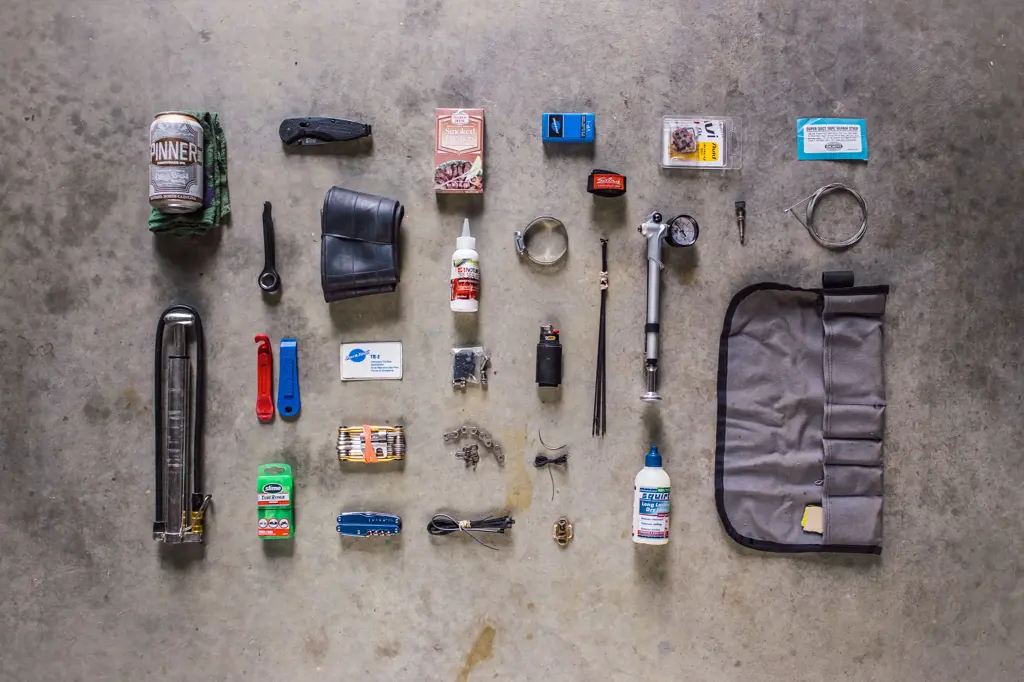
When preparing for a bike tour, it is essential to have the right tools and spare parts to handle any potential issues that may arise along the way. Having these items on hand will not only save you from potential headaches and delays but will also ensure that you can continue your journey without major interruptions. Here are some specific tools and spare parts that should be included in a bike touring packing list:
Multi-tool:
A multi-tool is arguably the most important item you should have in your bike touring packing list. It typically includes various types of Allen wrenches, screwdrivers, and even a chain tool. This tool can be used to make adjustments, fix loose bolts, and even repair a broken chain.
Spare Tubes and Patch Kit:
Flats are a common occurrence when riding a bike, especially on longer tours. It is always a good idea to carry a few spare tubes and a patch kit in case you encounter a puncture. The patch kit can be used to repair small holes in the tube, while spare tubes can be quickly swapped out if the damage is too severe.
Tire Levers:
Tire levers are essential for removing and installing tires. They come in handy if you need to replace a tube or fix a flat tire. Using tire levers makes this process much easier and reduces the risk of damaging the tube or tire.
Pump:
Having a portable pump is crucial for maintaining proper tire pressure throughout your tour. A compact and lightweight frame pump or mini pump can be easily attached to your bike frame and used to inflate tires whenever necessary.
Chain Lubricant:
Keeping your bike chain well-lubricated is essential for smooth and efficient pedaling. It is advisable to carry a small bottle of chain lubricant to reapply when needed. This will help prevent excessive wear and tear on the chain.
Spoke Wrench:
A spoke wrench is useful for adjusting and repairing broken spokes. It allows you to true the wheel, ensuring it spins evenly and reducing the risk of further damage.
Brake Pads:
Carrying an extra set of brake pads is a smart move, especially if you are embarking on a long tour. Brake pads wear down over time, and having a spare set ensures that you can continue to ride safely if the current pads become too worn.
Cable and Zip Ties:
Cables and zip ties are versatile items that can come in handy for a variety of repairs and improvisations. They can be used for securing loose parts, temporarily fixing broken components, or even holding items together.
These are just some of the specific tools and spare parts that should be included in a bike touring packing list. It is important to assess your bike's unique needs and potential issues specific to your tour. Additionally, familiarity with basic bike maintenance and repair techniques can also help you make the most of these tools and spare parts while on the road.
In conclusion, having the right tools and spare parts while bike touring can make a significant difference in your overall experience. It is always better to be prepared and equipped to handle potential issues that may arise during your journey. By including these essential items in your packing list, you can ensure a smoother and more enjoyable bike touring adventure.
Pack Like a Pro: Essential Items to Bring When Visiting Your Long Distance Boyfriend
You may want to see also

How do you make sure you pack efficiently and keep the weight of your gear to a minimum during a bike touring trip?
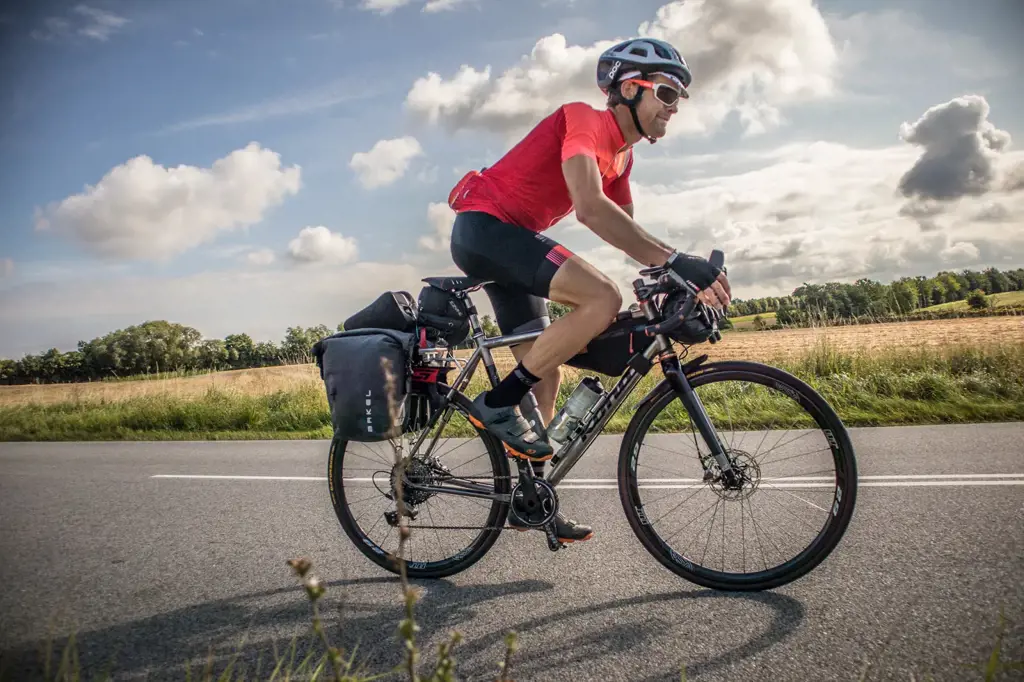
When embarking on a bike touring trip, it is crucial to pack efficiently and keep the weight of your gear to a minimum. This not only helps you ride smoothly and comfortably but also reduces the strain on your body and improves overall performance. In this article, we will discuss some strategies to help you achieve an efficient and lightweight packing for your bike touring adventure.
Start with a checklist:
Before you begin packing, make a checklist of all the items you will need during your trip. Categorize them into essentials and non-essentials, and prioritize accordingly. This will help you determine what items are absolutely necessary and what can be left behind.
Choose lightweight gear:
Opt for lightweight and compact versions of your gear. This includes your tent, sleeping bag, cooking equipment, and clothing. Look for materials that are durable yet lightweight, such as high-quality aluminum for cooking utensils and carbon fiber for tent poles.
Multi-purpose items:
Select items that serve multiple purposes. For example, a lightweight stove can be used not just for cooking but also for boiling water and as a source of warmth. A jacket that doubles as a raincoat and a sleeping bag liner that can be used as a sheet are excellent space-saving options.
Minimize clothing:
Pack only the essential clothing items that you will need during your trip. Consider the weather conditions you are likely to encounter and select versatile pieces that can be layered. Opt for quick-dry and moisture-wicking fabrics that can be easily washed and dried overnight.
Compression sacks and packing cubes:
Invest in compression sacks and packing cubes to maximize the use of space in your panniers. These allow you to compress your clothing and gear, making them more compact and easier to carry. They also help to keep your belongings organized, making it easier to access them when needed.
Prioritize weight distribution:
Distribute the weight evenly between your front and rear panniers to maintain balance and stability. Heavier items, such as cooking equipment and food, should be packed towards the bottom, closer to the bike's center of gravity. This will help reduce strain on your body and ensure a smooth ride.
Consider bike-specific gear:
Explore bike-specific gear options designed to be lightweight and compact. This includes handlebar bags, frame bags, and saddlebags. These specialized bags are designed to fit seamlessly on your bike, reducing the need for extra panniers and distributing the weight more evenly.
Test and adjust:
Before your actual bike touring trip, test your fully packed bike for a short ride to ensure everything feels balanced and comfortable. Make adjustments as necessary, redistributing weight or removing unnecessary items.
By following these tips, you can efficiently pack for your bike touring trip while keeping the weight of your gear to a minimum. It is important to find the right balance between carrying the essentials and avoiding unnecessary weight. Remember, a lighter load will make your journey more enjoyable and allow you to focus on the scenery and the joy of cycling.
Essential Items to Pack for Your Victoria Falls Adventure
You may want to see also
Frequently asked questions
When packing for a bike tour, it is important to pack efficiently to ensure you have everything you need without adding unnecessary weight to your bicycle. Some essential items to pack include a tent, sleeping bag, and sleeping pad for overnight stays, a first aid kit for any emergencies, repair tools and spare parts for your bike, a water bottle for hydration, and appropriate clothing for various weather conditions. Additionally, it is important to pack enough food and water to sustain you during your bike tour, as well as any personal items you may need such as toiletries and a cell phone for communication.
Whether or not to bring cooking equipment on a bike tour depends on personal preference and the length of your tour. If you are planning a short tour with frequent access to food options, you may not need to bring cooking equipment. However, for longer tours or tours in remote areas, bringing cooking equipment can be a convenient and cost-effective option. Lightweight camping stoves, cookware, and utensils are available that can easily pack onto your bike or in your panniers. This allows you to prepare your own meals, saving money and providing flexibility in your food options.
Packing your belongings for a bike tour requires careful consideration to maintain balance and stability while riding. It is important to distribute weight evenly on your bike to prevent it from becoming top-heavy or difficult to control. Some tips for packing include using bike-specific panniers or bags that attach securely to your bike frame, packing heavier items closer to the center of your bike for better balance, and using compression bags or sacks to make your belongings more compact. It is also important to secure your belongings to prevent them from shifting or falling off while riding.
Dressing appropriately for a bike tour is essential for comfort and safety. It is important to wear clothing that is lightweight, breathable, and moisture-wicking to help regulate body temperature and prevent overheating. Layering is also important to accommodate changing weather conditions. Start with a base layer that wicks away sweat, add a mid-layer for insulation, and finish with a waterproof and windproof outer layer. Additionally, padded shorts or cycling tights can provide added comfort during long rides. It is also important to wear a helmet, gloves, and appropriate footwear for protection and performance.
















